- Clone
- C9B7W (See other available formats)
- Regulatory Status
- RUO
- Other Names
- LAG3, LAG-3
- Isotype
- Rat IgG1, κ
- Ave. Rating
- Submit a Review
- Product Citations
- publications

-

ConA + IL-2 stimulated (3 days) C57BL/6 splenocytes were stained with CD3ε (clone 145-2C11) Alexa Fluor® 488 and CD223 (LAG-3) (clone C9B7W) Brilliant Violet 711™ (left) or rat IgG1, κ Brilliant Violet 711™ isotype control (right).
| Cat # | Size | Price | Quantity Check Availability | Save | ||
|---|---|---|---|---|---|---|
| 125243 | 50 µg | £194 | ||||
CD223, also known as LAG-3, is 70 kD type I transmembrane glycoprotein within the Ig superfamily. It is the gene product of lymphocyte activation gene-3 (Lag3) with structural similarity to CD4. CD223 is expressed on activated T cells and NK cells, as well as T regulatory cells. CD223, like CD4, binds MHC class II molecules, but with higher affinity than CD4. In association with the CD3 complex, CD223 has been shown as a negative regulatory molecule to inhibit TCR-mediated signaling and regulate homeostatic T cell expansion. In contrast to inhibition, CD223 has an activation function to promote immune responses by inducing MHC class II signaling in antigen presenting cells.
Product DetailsProduct Details
- Verified Reactivity
- Mouse
- Antibody Type
- Monoclonal
- Host Species
- Rat
- Immunogen
- Murine CD223-Ig fusion protein
- Formulation
- Phosphate-buffered solution, pH 7.2, containing 0.09% sodium azide and BSA (origin USA)
- Preparation
- The antibody was purified by affinity chromatography and conjugated with Brilliant Violet 711™ under optimal conditions.
- Concentration
- 0.2 mg/mL
- Storage & Handling
- The antibody solution should be stored undiluted between 2°C and 8°C, and protected from prolonged exposure to light. Do not freeze.
- Application
-
FC - Quality tested
- Recommended Usage
-
Each lot of this antibody is quality control tested by immunofluorescent staining with flow cytometric analysis. For flow cytometric staining, the suggested use of this reagent is ≤ 0.5 µg per million cells in 100 µL volume. It is recommended that the reagent be titrated for optimal performance for each application.
Brilliant Violet 711™ excites at 405 nm and emits at 711 nm. The bandpass filter 710/50 nm is recommended for detection, although filter optimization may be required depending on other fluorophores used. Be sure to verify that your cytometer configuration and software setup are appropriate for detecting this channel. Refer to your instrument manual or manufacturer for support. Brilliant Violet 711™ is a trademark of Sirigen Group Ltd.
Learn more about Brilliant Violet™.
This product is subject to proprietary rights of Sirigen Inc. and is made and sold under license from Sirigen Inc. The purchase of this product conveys to the buyer a non-transferable right to use the purchased product for research purposes only. This product may not be resold or incorporated in any manner into another product for resale. Any use for therapeutics or diagnostics is strictly prohibited. This product is covered by U.S. Patent(s), pending patent applications and foreign equivalents. - Excitation Laser
-
Violet Laser (405 nm)
-
Application References
(PubMed link indicates BioLegend citation) -
- Workman CJ, et al. 2002. Eur. Immunol. 32:2255. (IP, ELISA)
- Workman CJ, et al. 2005. J. Immunol. 174:688. (FC)
- Li N, et al. 2004. J. Immunol. 173:6806. (IP, ELISA)
- RRID
-
AB_2876450 (BioLegend Cat. No. 125243)
Antigen Details
- Structure
- Ig superfamily
- Distribution
-
T cells and NK cells, as well as T regulatory cells
- Cell Type
- NK cells, T cells, Tregs
- Biology Area
- Immunology, Inhibitory Molecules
- Molecular Family
- Adhesion Molecules, CD Molecules
- Antigen References
-
1. Baixeras E et al. 1992. J. Exp. Med. 176:327.
- Gene ID
- 16768 View all products for this Gene ID
- UniProt
- View information about CD223 on UniProt.org
Related FAQs
Other Formats
View All CD223 Reagents Request Custom ConjugationCustomers Also Purchased
Compare Data Across All Formats
This data display is provided for general comparisons between formats.
Your actual data may vary due to variations in samples, target cells, instruments and their settings, staining conditions, and other factors.
If you need assistance with selecting the best format contact our expert technical support team.
-
Purified anti-mouse CD223 (LAG-3)

ConA + IL-2 stimulated (3 days) C57BL/6 splenocytes stained ... -
Biotin anti-mouse CD223 (LAG-3)

ConA-stimulated (3days) C57BL/6 splenocytes were stained wit... -
PE anti-mouse CD223 (LAG-3)
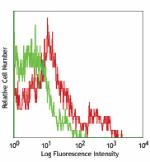
ConA-stimulated C57BL/6 splenocytes stained with C9B7W PE -
APC anti-mouse CD223 (LAG-3)
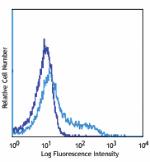
Con A-stimulated (day-3) C57BL/6 splenocytes stained with C9... -
PerCP/Cyanine5.5 anti-mouse CD223 (LAG-3)
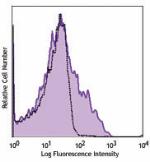
Con A-stimulated splenocytes stained with anti-mouse CD223 P... -
Brilliant Violet 785™ anti-mouse CD223 (LAG-3)
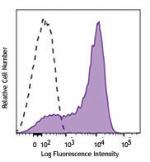
Con A+IL-2-stimulated C57BL/6 splenocytes (3 days) were stai... -
GoInVivo™ Purified anti-mouse CD223 (LAG-3)
Anti-mouse LAG-3, or CD223, inhibits the binding of mouse LA... -
Brilliant Violet 421™ anti-mouse CD223 (LAG-3)

Con A + IL-2-stimulated C57BL/6 splenocytes (3 days) were st... -
PE/Dazzle™ 594 anti-mouse CD223 (LAG-3)

Con A+IL-2-stimulated C57BL/6 splenocytes (3 days) were stai... -
Brilliant Violet 650™ anti-mouse CD223 (LAG-3)
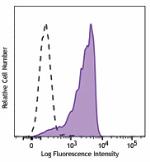
Con A + IL-2-stimulated C57BL/6 splenocytes (3 days) were st... -
PE/Cyanine7 anti-mouse CD223 (LAG-3)
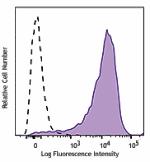
Con A+IL-2-stimulated C57BL/6 splenocytes (3 days) were stai... -
TotalSeq™-A0378 anti-mouse CD223 (LAG-3)
-
Ultra-LEAF™ Purified anti-mouse CD223 (LAG-3)

ConA + IL-2 stimulated (3 days) C57BL/6 splenocytes stained ... -
TotalSeq™-C0378 anti-mouse CD223 (LAG-3)
-
APC/Fire™ 750 anti-mouse CD223 (LAG-3)

ConA + IL-2 stimulated (3 days) C57BL/6 splenocytes were sta... -
Alexa Fluor® 647 anti-mouse CD223 (LAG-3)

ConA + IL-2 stimulated (3 days) C57BL/6 splenocytes were sta... -
TotalSeq™-B0378 anti-mouse CD223 (LAG-3)
-
Brilliant Violet 711™ anti-mouse CD223 (LAG-3)

ConA + IL-2 stimulated (3 days) C57BL/6 splenocytes were sta... -
PE/Fire™ 640 anti-mouse CD223 (LAG-3)

ConA+ IL-2 stimulated (3 days) C57BL/6 splenocytes were stai... -
PerCP/Fire™ 806 anti-mouse CD223 (LAG-3)

Con-A and IL-2 stimulated C57BL/6 splenocytes (three days) w... -
PerCP/Fire™ 780 anti-mouse CD223 (LAG-3)

Con-A and IL-2 stimulated C57BL/6 splenocytes (three days) w... -
Spark Red™ 718 anti-mouse CD223 (LAG-3) (Flexi-Fluor™)
 Login / Register
Login / Register 











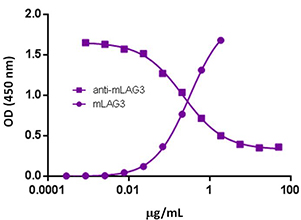
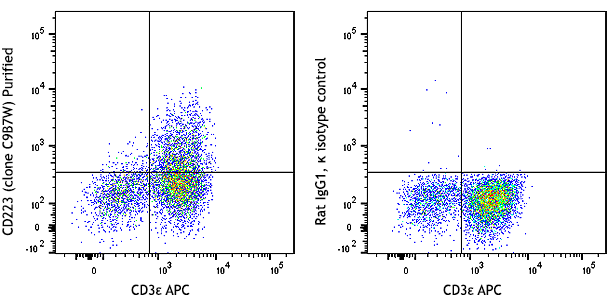
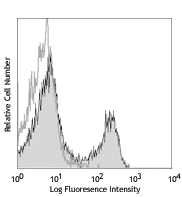
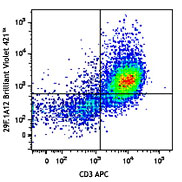
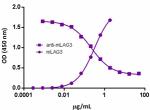



Follow Us